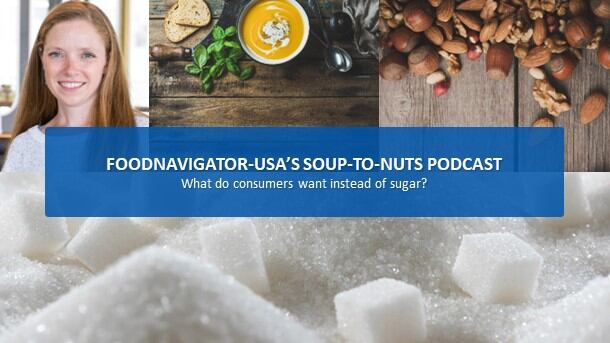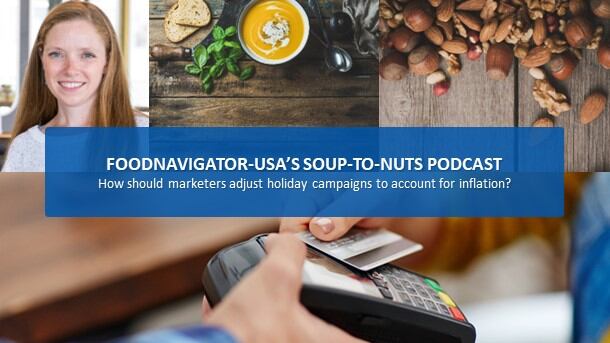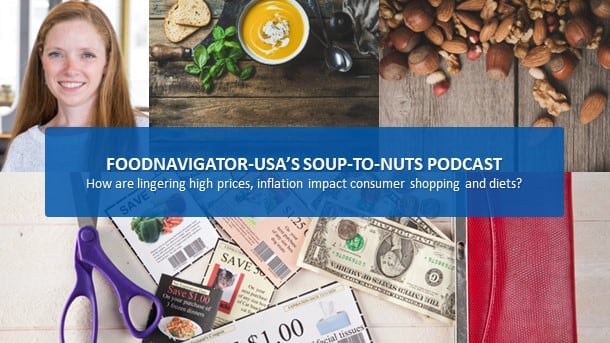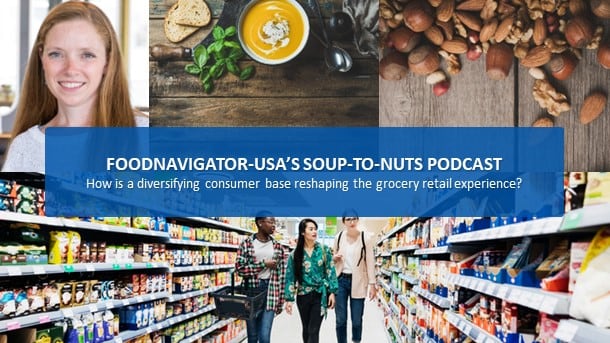Consumers’ focus on and desire to reduce sugar was on the rise long before the pandemic, but when COVID-19 revealed just how vulnerable our collective health could be many people took a more proactive and preventive approach to well-being – a shift that turbo-charged the sugar reduction movement.
But, as is often the case with consumers when it comes to food and beverages, many were unwilling to compromise the sweet taste of sugar or sacrifice its technical functions, like browning, mouthfeel and bulking – sending many manufacturers scrambling to renovate and innovate low- and no-sugar options.
In this episode of FoodNavigator-USA’s Soup-To-Nuts podcast, Carla Saunders, senior marketing manager for Cargill’s high-intensity sweeteners line, shares consumer trends and insights about sugar reduction and sweeteners from proprietary research, including how consumers balance and evaluate healthy versus indulgent products. She also shares how consumer attitudes about food-tech and environmental sustainability are evolving and influencing their views about sweeteners and other tools for reducing sugar.
[Editor’s note: Never miss an episode of FoodNavigator-USA’s Soup-To-Nuts podcast – subscribe today.]
‘Eating and drinking with a purpose’
Saunders explains consumers current focus on sugar reduction is part of a larger phase that she describes as “eating and drinking with a purpose,” which includes a wide range of physical and mental health benefits that shoppers are looking for from food and beverages and which manufacturers must carefully curate to meet an ever-shifting prioritization of values.
“Every single product on the shelf has some benefit – mental health [or] physical [health] attribute that consumers are looking for and they’re actively buying based on those attributes,” but “when we look at all the things that are going on, consumers really do rank sugar reduction as the number one way to make food and beverages healthier,” she said.
She added, to her surprise, that most consumers evaluate the sugar content in a product not based on front-of-pack claims or clever marketing slogans – but by flipping the package over and reading the Nutrition Facts panel.
“I am not saying that claims, or those front-of-the-pack claims don’t add value – because they do, they certainly do, especially if you think about trial and picking things up. … But this idea of the Nutrition Facts panel and the changes that have been made [including the addition of the ‘added sugars’ line] is just increasing awareness,” she said.
Consumers are scrutinizing sweeteners
According to a survey of more than 3,000 respondents conducted by Cargill, when consumers look at product labels they aren’t just looking for whether there is or isn’t sugar or how much – they also are scrutinizing the types of sweeteners.
Drawing from Cargill’s consumer research, Saunders explains that most consumers want products with lower sugar content, but some opt for foods and beverages made with natural no- and low-calorie sweeteners while others prefer full-sugar products, but just enjoy less of them.
Notably, Cargill’s research found only one in ten consumers say they would buy products made with artificial sweeteners and 76% listed artificial high-intensity sweeteners as a top ingredient that they avoid. This is higher than the 64% who listed sugar as a top ingredient they avoid.
But how sugar is described makes a difference in how tolerant of it consumers will be, said Saunders.
She explained that the company tested different naming conventions and found when sugar is described as ‘beet sugar’ or ‘cane sugar’ it performs better than when a label simply lists ‘sugar.’
Consumers also positively view non-caloric sweeteners, like stevia, monk fruit and allulose.
“There is a lot of variations that can happen when consumers see different ingredients and how they show up on the label. … They think about them differently, even though they may be exactly the same thing,” she said.
Non-caloric sweeteners resonate with consumers
While most consumers may not know that, as Saunders put it, most sugar is sugar and digested by the body the same way, they do know – and want – about non-caloric sweeteners and recognize them by name.
“The majority of consumers are familiar with stevia,” said Saunders, pointing to its prevalence in products across categories.
“Retail products that have stevia account for $4.8bn in grocery retail, and year over year we have a five-year CAGR of 15%. Dollar growth and unit growth is right along there,” too, she said.
As consumers learn more about different sweeteners, Saunders says that stevia is gaining popularity – especially with younger shoppers and families.
Consumers still want to indulge in sugar sometimes – requiring brands to be flexible
While sugar reduction is on the rise, the move isn’t perfectly linear, according to Saunders, who says consumers – and as an extension brands – aren’t all in on avoiding sugar, but rather are looking for a balance that allows them to cut back in some places but still indulge in others. This gives brands flexibility in their use of different sweeteners solutions to bring a range of products to market.
“It is fascinating. From the research that we have, yes, sugar reduction and increase of stevia sales and monk fruit sales is absolutely true, but we are also seeing indulgence increase. So it is not one or the other. It is an ‘and,’” Saunders said.
This means not all products need to fully remove sugar – rather some can simply reduce it and still see strong engagement with consumers.
When thinking about where it makes sense to cut back on sugar and where it may make more sense to lean into indulgent, Saunders says beverages are a segment well suited for sugar reduction but that confections and baked goods are more difficult areas in which to cut back on sugar.
Manufacturers must weigh sugar’s technical functions when reformulating
Successfully reducing sugar without sacrificing taste is not a matter of simplying swapping in one sweetener for another – the technical functions of sugar also must be taken into account, notes Saunders, who called out its role in mouthfeel, bulking and browning. As such, she said, Cargill works with ingredients beyond its sweeteners line to create a full experience that will appease consumers.
Some of the ingredients that Saunders says she is excited to see complement sweeteners are pectin, low-calorie polyols, fiber, and a new lower sugar chocolate.
Consumers have an open mind about technology’s role in sugar reduction
Looking forward, Saunders says she is excited about the potential for technology to help advance the next generation of sweeteners and other ingredients to help with sugar reduction. She adds, she is likewise excited about consumers’ increasing openness to the role of technology in food production, including its ability to help them balance their desire for products that are healthier for them and the planet and which are accessible.
“When I think about what’s next for sweeteners and sugar reduction, I really think that this idea about consumers’ openness to technology is really going to expedite the ability for manufacturers to provide next generation solutions,” Saunders said.
For example, she said she sees door opening for broader use of fermentation to enhance sweeteners and botanicals to alter the taste experience.
As sugar reduction options increase and improve alongside consumer acceptance, Saunders says she is optimistic about the future. But she also advises companies not to lose track of the basics, which for food and beverage is taste. If something has great nutritionals and a positive sustainability story or great price point, but it doesn’t taste good – it won’t sell. So, as with most aspects in life, moderation and balance are key.




